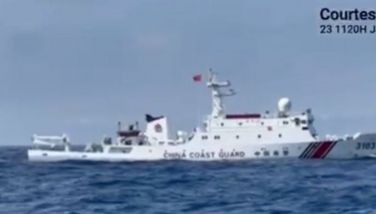Filipino revolutionary heroes were young

“The Youth is the fair hope of the Motherland.” That is José Rizal’s most famous quotation. As it did in his time, the reflection holds true today, when 53 percent of Filipinos are below 20 years old and only three percent are above 65. Rizal himself started young in inspiring Filipinos about nationhood. He was only 26 when he published Noli Me Tangere in 1887. Going by the World Health Organization’s definition of “youth” as age 15 to 34, Rizal was barely out of his youth when executed at age 35. The Filipino life expectancy then was 66.1 years.
Many heroes of the Revolutionary Period — from the Propaganda Movement in the 1880s to the setting up of a national government in 1907 — were as young. A partial listing:
• Graciano Lopez Jaena was 32 when he founded the newspaper La Solidaridad in Madrid. He endured hunger and disease to expose to the Spanish people the aspiration of indios in their colony, Las Islas Filipinas.
• Marcelo H. del Pilar was probably the oldest of our young heroes. He was 39 when he took over editorship of La Solidaridad. Yet he started writing against friar rule in his native Bulacan as a lawyer aged 30. So stinging were his articles that he had to flee to Spain from persecution.
• Isabelo de los Reyes was 25 when he started writing in Ilocano and Spanish against abuses of the colonizers. He was barely 30 when thrown to the dungeons in Madrid for inciting fellow-Ilocanos to speak out against the abusers.
• At age eight Rizal wrote a poetic tribute to the mother tongue, “Sa Aking Mga Kabata (To My Fellow Youth)”. He finished his second novel, El Filibusterismo in 1891, when he was 30. His writings caused his exile to Dapitan the following year. He was blamed for the spark of the Revolution in 1896 and so was martyred that same year.
• Andres Bonifacio founded the Katipunan when he was but 29.
• When the Revolution began, his faithful comrade-in-arms Emilio Jacinto was only 21. Youth did not deter Jacinto, after the Supremo’s death, from carrying on the struggle in the mountains of Laguna.
• Gregoria de Jesus was only 22 when she became Bonifacio’s widow. She courageously fought on for independence.
• Emilio Aguinaldo was the victorious general of the Revolution at age 27. He founded the first Republic in Asia three months after turning 29.
• Maestro Artemio Ricarte was 32 when he taught the Katipunan trench warfare. His invaluable field tactics prevented Spanish troops from capturing Cavite.
• Marcela Agoncillo was 37 when she sewed the first Philippine flag for unfurling on June 12, 1898.
• Gregorio del Pilar became a general of the Katipunan at age 21. He had just turned 24 when he fought his last battle as Aguinaldo’s rear guard at Tirad Pass in 1899.
• Apolinario Mabini was 34 when he took on the intellectual leadership of the Malolos Republic and drafted its Constitution.
• Miguel Malvar was 36 when, after Aguinaldo’s capture, he took over the Revolutionary government in 1901.
• Macario Sakay was 31 when he continued the War of Liberation against the new U.S. colonizers in 1901 to 1904.
• And Sergio Osmeña and Manuel Quezon were both only 29 when they boldly became the Speaker and Majority Leader, respectively, of the first Philippine Assembly under American rule in 1907.
There surely were thousands of other young Filipino heroes during the countless revolts against 333 years of Spanish rule. Diego Silang was 32 when he led the Ilocano uprising against abuses and taxation in 1762. At age 33 he was assassinated the following year. His wife Gabriela, only a year younger, carried on the fight for four months until captured and executed. The Dagohoy Revolt in Bohol could not have lasted almost 85 years, 1744 to 1829, without the participation of youthful fighters.
The Filipino soldiers at Bataan and Corregidor were also young. A good number of them were college ROTC cadets; others were enlistees in their 20s in the US Armed Forces in the Far East. Tens of thousands of them were forced on a Death March to prisoner-of-war camp in Tarlac. Survivors carried on the fight, as guerrilla leaders of more youth recruits. One such hero was Sgt. Jose Calugas of the Philippine Scouts, who led his squad in a last-ditch battle against hundreds of advancing Japanese forces. Captured, he joined the torturous march to Capas, went underground upon release in 1943, and lived to tell the story of his buddies till age 91. Had they been older then they were then, they might not have survived the rigors of battle, prison and jungle.
* * *
Catch Sapol radio show, Saturdays, 8-10 a.m., DWIZ, (882-AM).
E-mail: [email protected]
- Latest
- Trending





























